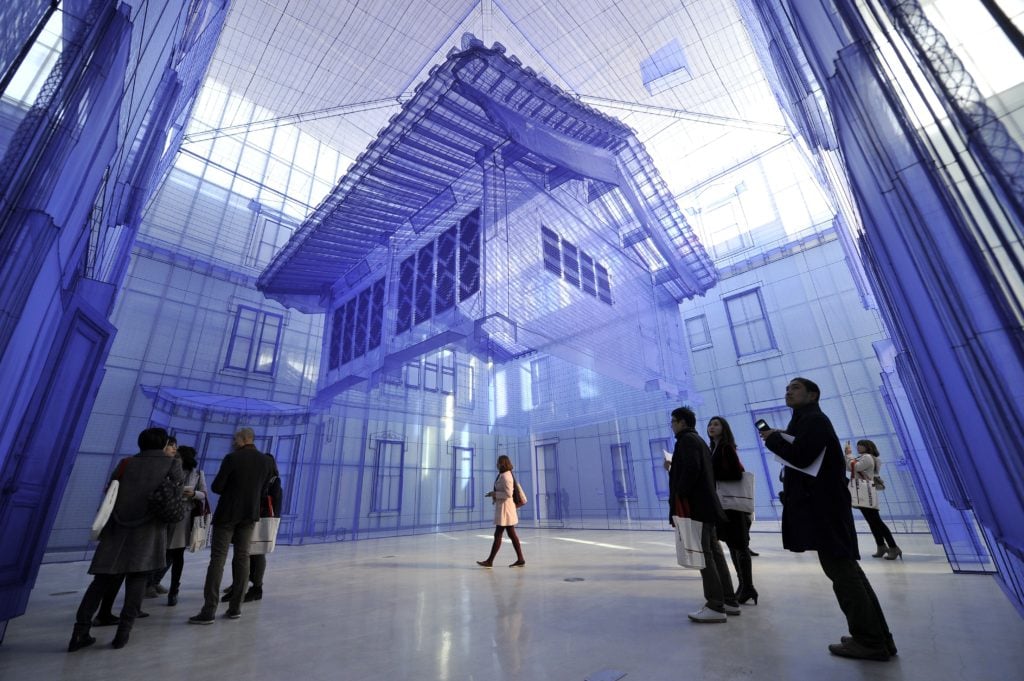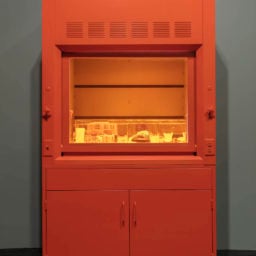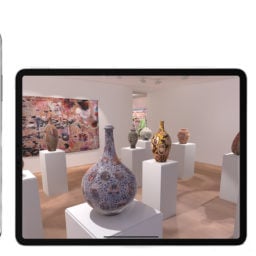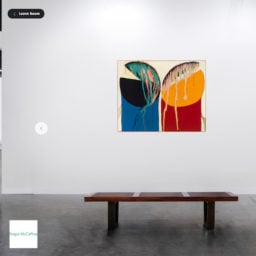Every Monday morning, Artnet News brings you The Gray Market. The column decodes important stories from the previous week—and offers unparalleled insight into the inner workings of the art industry in the process.
This week, looking toward a possible new working-world order…
DISTANCE LEARNING
On Thursday, my colleagues Kate Brown and Eileen Kinsella drilled into the challenges now facing small and modestly sized galleries in the social-distancing era. The picture isn’t pretty, and many of its pockmarks are present for a slew of small businesses unrelated to art, too: the borderline-Kafkaesque responsibility to continue paying rent on real estate that officials have likely ordered you not to operate; the wrenching reality of not being able to make payroll for upstanding employees; the sudden need to pivot almost exclusively to e-commerce.
I’m not going to try to drench this new reality in chocolate sauce for you: many, if not most, people who make a living doing much of anything related to art are in trouble for the short- and medium-term, even on the nonprofit side. The New York Times reported on Wednesday that the Metropolitan Museum of Art projects it may stay closed until at least July and lose up to $100 million. But embedded in that story was an even more sobering projection from Laura Lott, president and CEO of the American Alliance of Museums (AAM): that one-third of museums it surveyed “will not reopen if the crisis continues.”
For clarity, AAM members include the likes of science museums, zoos, botanical gardens, and many more art-unrelated institutions. This clarification may make the future of cultural life in the US slightly less depressing, or slightly more depressing, depending on your personal perspective.
Whether we’re talking about the culture industry, finance, or any other sector of the economy, though, the main problem is that we have no consensus on how long social distancing will need to last, largely because we have distressingly spotty data on the disease. The good news is that people and businesses are now beginning to re-emerge from lockdown in some of the East and Southeast Asian countries where it originated. The caveat is that, by slowing the rate of infection, effective social distancing also slows the pace of any community’s development of herd immunity—meaning that lockdowns may need to be reimposed if the rate of new transmissions begins climbing again.
Writing for the New York Times on Wednesday, a trio of medical professionals asserted that “social distancing 2.0, 3.0, and, who knows, maybe even 4.0 will very likely have to occur.” In the most extreme case, they estimate that society’s pendulum may need to keep swinging like this for 18 months or more absent a vaccine, which probably wouldn’t be developed and sufficiently distributed until at least fall 2021.
All of this explains why some people are shifting from thinking about how the current health situation will reshape the spring and summer, to thinking about how it could transform life in the developed world for good.
Hopefully, some of the potential structural changes will apply to government, but others will almost undoubtedly apply to business. One of the latter could be a dramatic, permanent increase in the number of people working from home. And although it’s little more than a far-off silver lining amid the current crisis, that possibility could eventually (emphasis on “eventually”) benefit the art market.
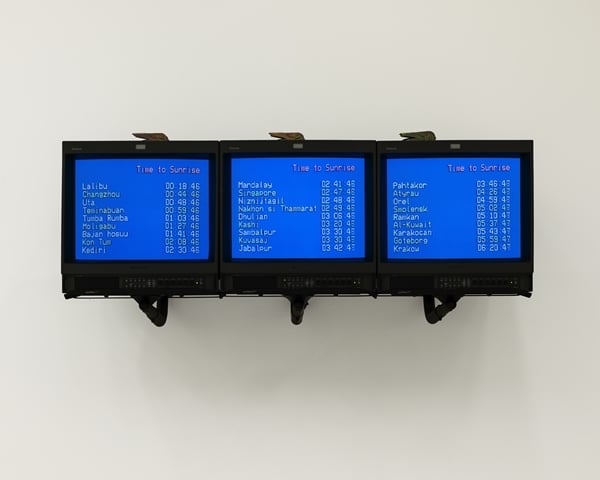
Installation view of Paul Ramírez Jonas, Another Day (2003), in “Under the Same Sun: Art from Latin America Today” at the Solomon R. Guggenheim Museum, New York. Photo: David Heald © Solomon R. Guggenheim Foundation.
REMOTE CONTROL
Before I go any further, let me say this: I am not suggesting that the possibilities I’m about to lay out are anywhere near the most necessary ones to reinvigorate the arts in a more equitable way. On that front, William S. Smith wrote an excellent piece in Art in America a few days ago arguing that the best response to the shutdown of the cultural sphere would be a contemporary update of the Federal Art Project, the New Deal program that, in conjunction with the Works Progress Administration, directly paid artists in the US to create individual pieces, collaborate on public artworks, and document less visible genres such as craft and folk art.
The point, in his words, would be to “reimagine art as a public good” rather than as a private commodity or an investment vehicle—a proposal and underlying principle I’d enthusiastically co-sign.
What I’m focusing on instead here is a separate, strictly commercial avenue that could be paved by a post-lockdown shift in the labor market. According to data from the US census, about 8 million Americans (5.2 percent of the country’s employed population) worked from home in 2017. The Federal Reserve found that figure to be a threefold increase from 15 years earlier.
Skip ahead to this month, and tens of thousands, and potentially millions, more workers are engaged in emergency telecommuting.
While I haven’t been able to find a reliable estimate for exactly how many more, the Bureau of Labor Statistics previously estimated that 29 percent of the US labor force could theoretically work from home all the time. That percentage would equate to almost 45 million Americans—close to 37 million more than were already working remotely back in 2017, for an increase of more than 450 percent.
Again, this is strictly in the US. Millions more people around the globe were already working from home before 2020. But Bloomberg declared in early February that China was then conducting “the world’s largest work-from-home experiment,” and the laboratory’s size has magnified considerably since thanks to the illness’s global spread.
Here’s the thing about giant ruptures to the economy: they reveal all kinds of interesting data points to employers. After the Great Recession forced an untold number of business owners to carve costs to the bone marrow or die, many found that they could earn as much—or even more—revenue with a fraction of the full-time and part-time staff they were paying before the crisis.
Instead, they realized, much of that labor could be supplied by freelancers, gig workers, outsourcing firms, and/or technology, for less money and no benefits. And some of the workforce (think: middle managers) didn’t have to be replaced at all. So when the world economy recovered, many, if not most, employers were happy to carry on with their newly lean operations rather than revert back to the costlier pre-recession model.
I’m sorry to say that I anticipate we’ll see something similar happen once public health is restored. The most consequential and distressing effect will be downsizing, with the ruthless pursuit of profit-maximization likely leading to thousands upon thousands of supposedly non-essential jobs being cut—a prospect that once again highlights the US’s need for a stronger social safety net.
But a wave of long-term work-from-home mandates will probably be a part of the picture, too, and could even help reduce the number of layoffs deemed necessary. Think about the savings for business owners: less office space to rent, lower cleaning and maintenance fees, smaller utilities bills, zero need to supply accoutrements like water coolers or coffee to onsite staffers. (If you think that last one is too minor a line item to be deleted, let me assure you as someone whose office was downgraded to a Brita filter in 2009: it’s not.) The smaller the company, the more consequential the savings from permanently shifting as much staff as possible to telecommuting.

Installation view of the South London pop-up that launched Banksy’s homeware line, Gross Domestic Product, in 2019. Photo: Aaron Chown/PA Images via Getty Images.
ROOM FOR IMPROVEMENT
So why might this pivot matter to the art market?
It’s rarely a bad bet to assume I’m riding a stranger wave than the rest of the population. However, in my first 10 consecutive work-from-home days, I’ve already rearranged two pieces of furniture, identified at least three more I should add or upgrade, and, most importantly for this column’s purposes, become acutely aware of how many empty walls are left in my place.
I’m going to guess thousands of new remote workers have already recognized similar shortcomings in their homes, and that thousands, potentially even millions, more will do the same by the end of the social-distancing era. When you work from home, the state of your home takes on new importance. If you disagree, wait until you’ve gone through another few weeks of video conferences, particularly as they expand beyond coworkers and clients to friends and potential lovers.
Not every member of this demographic will decide to fill the void with fine art, of course. But many others will—or, at least, could—once the world stabilizes enough for discretionary spending to seem justified again. If so, that represents a huge opportunity for artists and dealers. Assuming, that is, they’re genuinely committed to finding clients outside the establishment who may buy only until their walls are full, then disappear.
Pursuing those buyers is no simple decision, especially since many of them would be more likely to spend a few hundred dollars (or maybe a few thousand) on an artwork instead of a few hundred thousand. It would also likely require fundamentally different ways of marketing than the ones the art trade has come to rely on (many of which the current health situation has revealed to be more vulnerable than dealers liked to recognize anyway). After all, a sharp rise in the number of telecommuters could free up many more people to retreat from pricey art hubs like New York, London, and Hong Kong to more livable cities without hearty gallery districts or decent regional art fairs.
Regardless, history’s most expansive work-from-home experiment is going to warp life and business for the long term. And while every artist and dealer should primarily be thinking about getting through the present first, the current emergency also highlights the importance of thinking ahead, particularly if the people around you aren’t.
[Artnet News]
That’s all for this week. ‘Til next time, remember: for the time being, home is where the art is.
